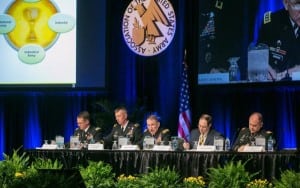
A list of 15 cities that could host a headquarters for the Army’s new Futures Command has been whittled to five, of which two still await visits from an information-gathering team ahead of potential in-person stopovers by the number-two uniformed and civilian service officials.Ten cities – Atlanta, Chicago, Dallas, Denver, Houston, Los Angeles, New York City, San Diego, San Francisco and Seattle – have been scrubbed from the running to host up to 500 personnel of the new unit that…

 By
By 











